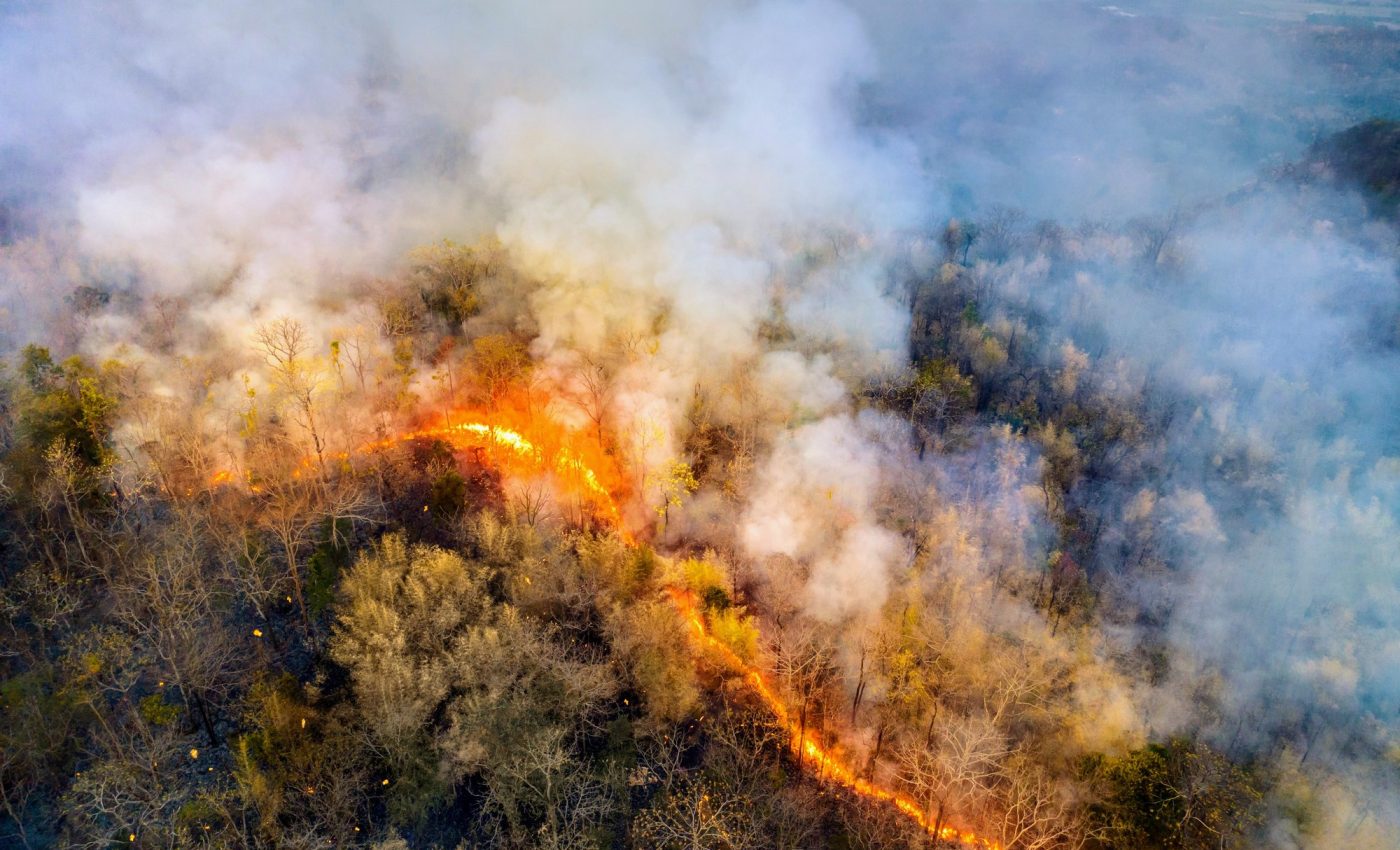
Wildfire smoke creates conditions that favor more fires
Wildfires have always been a terrifying spectacle of nature’s raw power. But a remarkable study from UC Riverside reveals a chilling twist: smoke from the wildfires may be stoking the very conditions that feed their growth.
Wildfire smoke signals
We’ve all seen the towering plumes of smoke rising from wildfires, but these aren’t just a sign of destruction. They’re a key factor in a dangerous feedback loop.
“Fires emit smoke with black carbon, or soot. Since it is very dark, the soot absorbs sunlight more readily than bright or reflective things,” noted James Gomez, the lead author of the study.
This soot, a type of aerosol, acts like a heat-trapping blanket. It soaks up the sun’s energy, raising temperatures and creating a hotter, drier environment. This, in turn, makes the perfect recipe for more fires to ignite.
Vicious cycle in Northern California
Northern California, with its abundant and dense vegetation, is particularly vulnerable to the self-perpetuating nature of wildfires. The region’s landscape, rich in flammable plant matter, provides ample fuel for fires to spread and intensify.
The study’s findings reveal that the impact of wildfires in Northern California is amplified by an average daily temperature increase of 1 degree Celsius (33.8 degrees Fahrenheit) during active fire periods.
This heightened temperature, a direct consequence of the fire itself, further dries out vegetation and creates a more conducive environment for fire to propagate, exacerbating the already destructive nature of these events.
“It appears these fires are creating their own fire weather,” said Gomez. This chilling statement paints a picture of wildfires fanning the flames of their own growth, creating a vicious cycle that’s difficult to break.
Double-edged sword of wildfire smoke
The story of aerosols in our atmosphere is a complex one. Some, like sulfate aerosols from fossil fuels, act as a shield, reflecting sunlight and cooling the environment. However, recent research suggests that efforts to improve air quality by reducing these aerosols may have an unintended consequence: an increase in wildfires.
On the other hand, black carbon from wildfires does the opposite. It traps heat, dries out the atmosphere, and discourages cloud formation. “What I found is that the black carbon emitted from these California wildfires is not increasing the number of clouds. It’s hydrophobic,” said Gomez.
This means fewer clouds and less rain, a dire prospect for drought-prone regions already struggling with water scarcity.
Can we break the cycle?
The situation may seem grim, but there’s hope. Gomez believes that mitigating CO2 emissions and implementing better land management practices can help reduce the number of large wildfires.
“There is a buildup of vegetation here in California. We need to allow more frequent small fires to reduce the amount of fuel available to burn,” said Gomez. “With more forest management and more prescribed burns, we could have fewer giant fires. That is in our control.”
This research isn’t just a wake-up call about the dangers of wildfires. It’s a reminder that the Earth’s systems are interconnected in complex ways.
Our actions have consequences, both intended and unintended. And as we continue to grapple with the challenges of climate change, understanding these connections is more important than ever.
Future of wildfire research
The UC Riverside study is a significant step forward in our understanding of wildfires and their impact on the environment. However, it’s just the beginning. There’s still much to learn about the complex interplay between fire, weather, and climate change.
Future research will likely delve deeper into the role of aerosols, both from natural and human-made sources.
Scientists will also continue to explore the effectiveness of various fire management strategies, with the goal of reducing the frequency and intensity of wildfires.
Burning issue of wildfire smoke
The issue of wildfires is a burning one, both literally and figuratively. It’s a problem that affects us all, whether we live in fire-prone areas or not. The smoke from wildfires can travel thousands of miles, impacting air quality and public health far from the source of the flames.
As we continue to face the challenges of a changing climate, the research from UC Riverside serves as a stark reminder that we must act now to prevent the worst-case scenarios from becoming a reality. The future of our planet, and our own well-being, depends on it.
The study is published in the journal Atmospheric Chemistry and Physics.
—–
Like what you read? Subscribe to our newsletter for engaging articles, exclusive content, and the latest updates.
Check us out on EarthSnap, a free app brought to you by Eric Ralls and Earth.com.
—–













